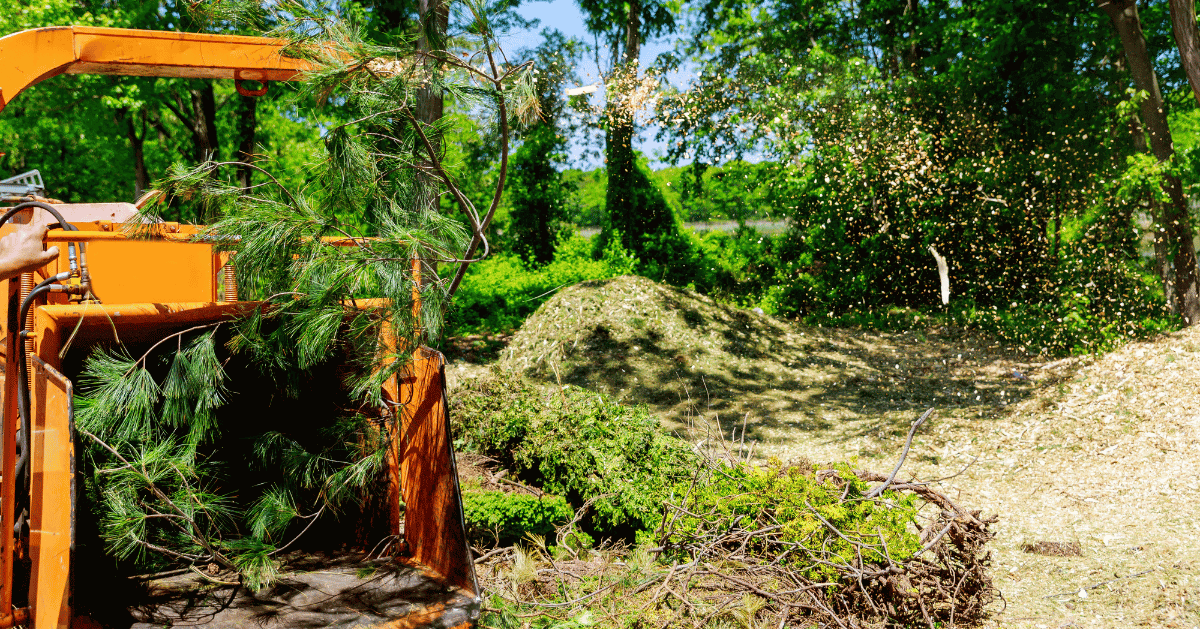Hydrangeas are renowned for their large, vibrant blooms and lush foliage, making them a favorite among garden enthusiasts. However, these beautiful plants can sometimes begin to wilt, causing concern for their caretakers.
At Strobert Tree Services, we understand how distressing it can be to see your garden's pride and joy start to sag. This comprehensive guide will explore the reasons behind wilting hydrangeas, how much water they require, and effective revival techniques. Our expertise extends beyond trees, offering insights into your garden's overall care and maintenance.
Understanding Hydrangea Wilting
Wilting in hydrangeas can be attributed to various factors, ranging from environmental conditions to pest infestations. One common cause is improper watering—either too much or too little. Hydrangeas thrive in moist, well-drained soil, but standing water or drought can lead to stress, causing the plants to wilt.
Another factor is the location of your hydrangeas. These plants prefer the morning sun with afternoon shade. Excessive exposure to direct sunlight, especially in hotter climates, can scorch their leaves and deplete their water resources rapidly, leading to wilting.
Pests and diseases also play a role. Root rot, caused by fungi due to overly wet soil conditions, and pests like spider mites or aphids can weaken the plant by damaging its leaves and roots, causing the hydrangeas to droop.
Natural Wilting During the Day
If your bigleaf hydrangeas wilt during the hottest part of the day but perk up by evening, don’t panic. This is temporary wilting and happens as a natural way for the plant to conserve water. On hot days, especially with hot winds, hydrangeas lose moisture faster than their roots can absorb it. Even if the soil is damp, the leaves may still droop to reduce water loss.
The good news? This isn’t a sign of distress—it’s just how hydrangeas handle temperature recovery. By evening, when the air cools down and the sun is less intense, they rehydrate and stand tall again. You can help by planting them in a sheltered location with partial shade, which protects them from direct afternoon sun and drying winds. A natural windbreak, like a fence or taller shrubs, also helps reduce moisture loss.
Stick to a consistent watering routine, making sure the soil stays evenly moist but not soggy. Water deeply in the morning so the roots have plenty of hydration before the heat sets in. With the right care, your hydrangeas will stay healthy and beautiful, even on the hottest days.
Incorrect Fertilization and Wilting Hydrangeas
Fertilizing your hydrangeas seems like a good idea, but too much of the wrong nutrients can actually cause them to wilt. Overfertilization, especially with excessive nitrogen, promotes rapid vegetative growth at the expense of strong root development. This makes the plant more vulnerable to environmental stress, like heat or drought, because the roots can’t absorb enough water. Fertilizer runoff can also disrupt soil pH, leading to nutrient deficiencies that weaken the plant over time.
To prevent this, use a balanced slow-release fertilizer that provides steady nourishment without overwhelming the roots. Before adding any fertilizer, do a soil test to check for deficiencies and ensure your hydrangeas are getting what they need. Timing also matters—fertilizing too late in the season can interfere with pruning timing and winter hardiness. A well-fed, well-balanced hydrangea will stay strong, absorb water properly, and resist wilting.
Root Damage and Wilting Hydrangeas
Healthy roots keep hydrangeas strong, but when they’re damaged, the plant struggles to take in water and nutrients. Root rot is a common problem, especially in waterlogged soil. When fine roots sit in too much moisture, fungi attack, leading to decay. This lowers turgor pressure, causing leaves to droop. If the soil is too compacted, roots can’t spread properly, making it harder for the plant to absorb what it needs.
Improper planting also stresses hydrangeas. If they’re planted too deep, roots suffocate. If they’re too shallow, they dry out easily. Environmental changes, like sudden temperature drops, can damage roots in winter, leading to slow spring growth. Adding mulch helps insulate them from extreme cold.
Good air circulation keeps roots healthy by preventing excess moisture buildup. If deer are a problem, using deer-resistant strategies, like fencing or repellent sprays, can keep them from trampling the soil and damaging roots. When problems arise, a fungicide can help fight infections, but prevention is key. Avoid overwatering, improve drainage, and keep soil loose to support strong root development. With the right care, hydrangeas can bounce back from root stress and thrive.
Transplant Shock
Moving a hydrangea from one spot to another can be stressful for the plant. This stress, known as transplant shock, often causes wilting. Whether you’re relocating an Annabelle hydrangea or a Strawberry Vanilla hydrangea, the roots need time to adjust. The best seasons for transplanting are spring and fall when temperatures are mild. Cool weather planting helps reduce water loss and gives the roots a chance to establish before extreme temperatures arrive.
If you transplant in hot weather, your hydrangea may struggle with water stress and droop under the sun. Summer planting is possible, but extra watering and shade can help prevent sudden wilting. On the other hand, winter or frost damage can occur if your hydrangea isn't settled before a sudden temperature drop. If you've moved your plant too late in the season, a layer of mulch can help insulate the roots.
The recovery period depends on how well the plant adjusts to its new location. To support root adjustment, keep the soil moist but not soggy. Water deeply and regularly, especially in the first few weeks. If your hydrangea continues to wilt, don’t panic—many bounce back with time. With patience and the right care, your plant will regain its strength and flourish in its new home.
How Much Water Do Hydrangeas Need?
Hydrangeas have a hearty appetite for water, but how much do they need? The answer varies depending on the climate and soil type. A general rule of thumb is to water your hydrangeas once a week with about an inch of water. During particularly hot or dry spells, watering frequency may need to increase to twice a week.
Ensuring that the soil around hydrangeas is kept consistently moist but not soggy is essential. Mulching around the base of the plant can help retain moisture and stabilize soil temperature, contributing to overall plant health and reducing the likelihood of wilting.
How to Revive Wilting Hydrangeas
Reviving wilted hydrangeas requires prompt and careful attention. Start by assessing the soil's moisture level; if it's dry, provide a deep, thorough watering. If the soil is excessively wet, improve drainage around the plant or consider replanting it in a better-drained area.
If sun exposure is an issue, creating some form of shade during the hottest part of the day can help. This could involve relocating potted hydrangeas or installing a temporary shade cloth over garden-planted hydrangeas.
Inspecting the plant for pests and diseases is crucial. Treat infestations with appropriate pesticides or fungicides, following recommended safety practices and application rates. Pruning away heavily infected or dead plant material can also help rejuvenate the hydrangea.
How Often to Water Hydrangeas
Regularly checking the soil's moisture will guide your watering schedule. As mentioned, aim for about an inch of water per week, adjusting as needed based on weather conditions and soil type. Over-watering can be just as detrimental as under-watering, so finding the right balance to maintain your hydrangea's health is essential.
Pests and Diseases
Wilting hydrangeas might be dealing with unwanted visitors. Pests like aphids and spider mites suck sap from leaves, weakening the plant. Nematodes attack roots, making it hard for the plant to absorb water. Powdery mildew and other fungal problems thrive in humid conditions, covering leaves in a white or gray coating. These issues often arise when plants are stressed from poor hydration or overcrowding.
The best way to keep your hydrangeas healthy is through regular monitoring. Check leaves and stems for signs of infestations or disease. If pests appear, try insecticidal soap or neem oil to control them naturally. For fungal issues, improve airflow and avoid overhead watering. Choosing disease-resistant varieties can also help prevent future problems. Keeping up with proper watering and plant care reduces the risk of pests and diseases taking over.
Contact Strobert Tree Services
For those in Delaware, Pennsylvania, and New Jersey needing expert advice or assistance with their garden, including hydrangea care or tree maintenance, Strobert Tree Services is here to help. Our team of experts can handle all aspects of tree pruning and maintenance, ensuring the health and beauty of your garden.
Wilting hydrangeas can signify distress but can be restored to their former glory with the proper care and attention. Understanding the causes of wilting and how to respond effectively is critical to keeping your hydrangeas thriving. Whether you're an experienced gardener or new to plant care, Strobert Tree Services is ready to support your gardening endeavors with professional advice and services.











